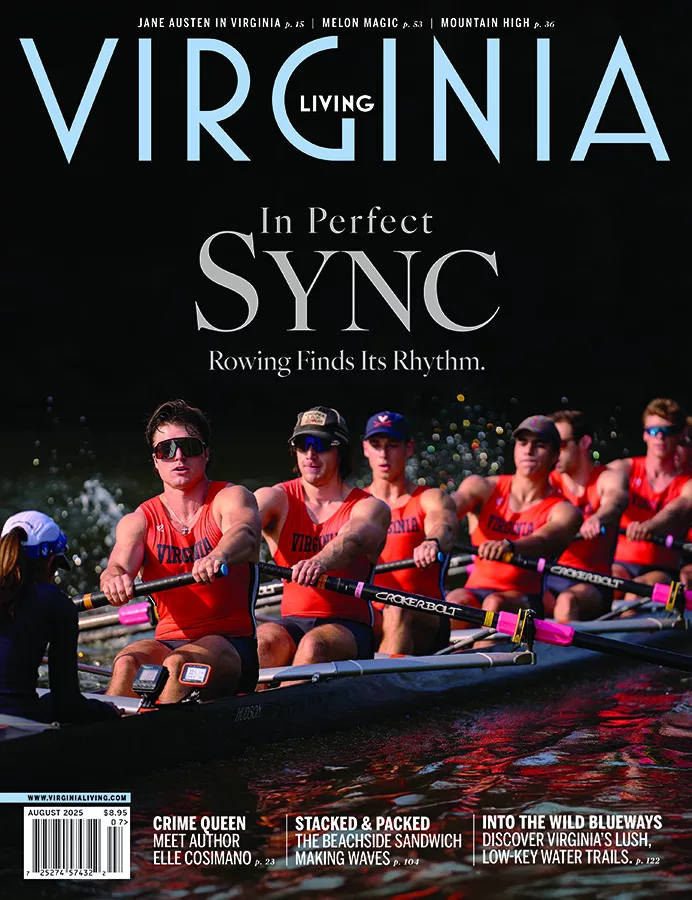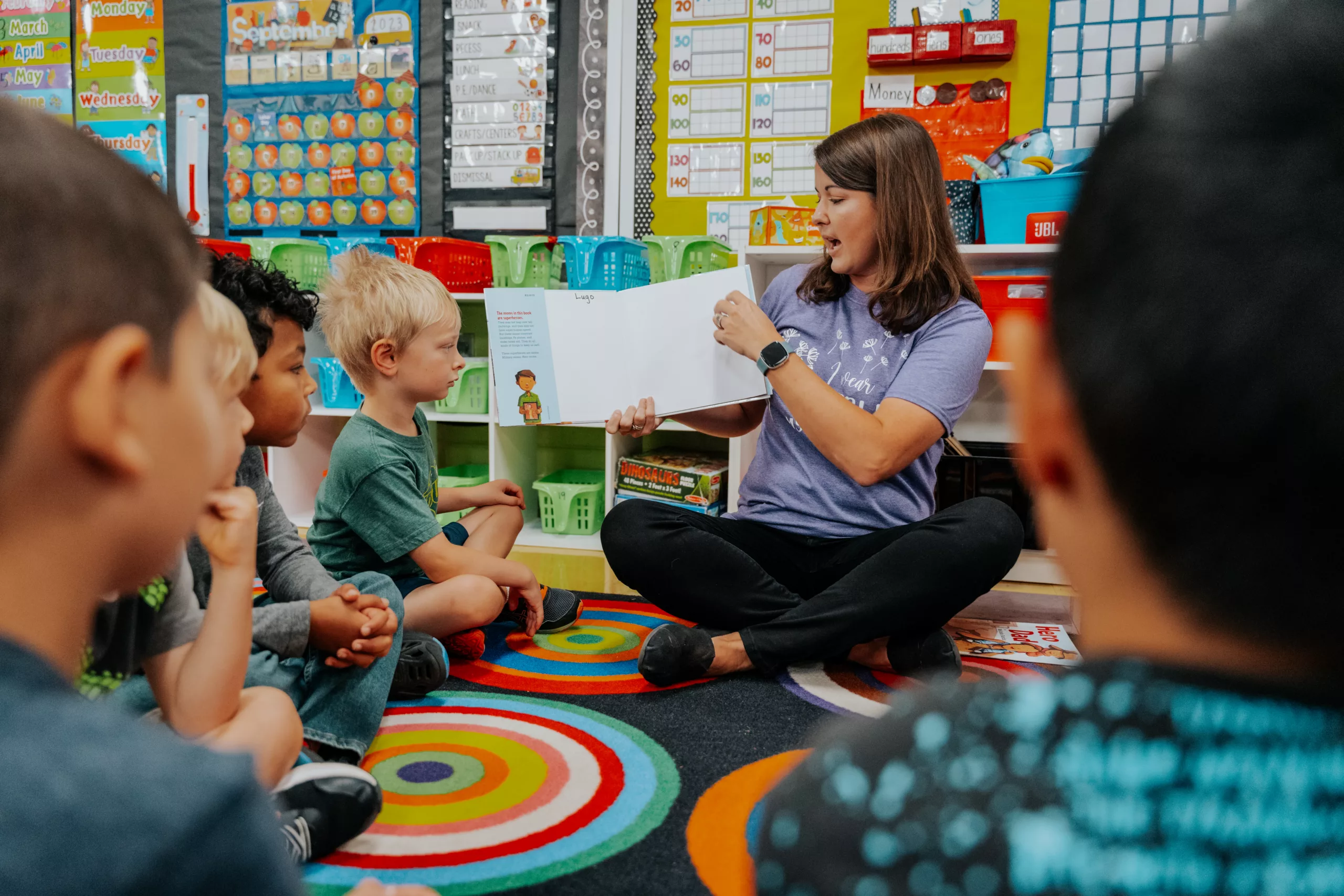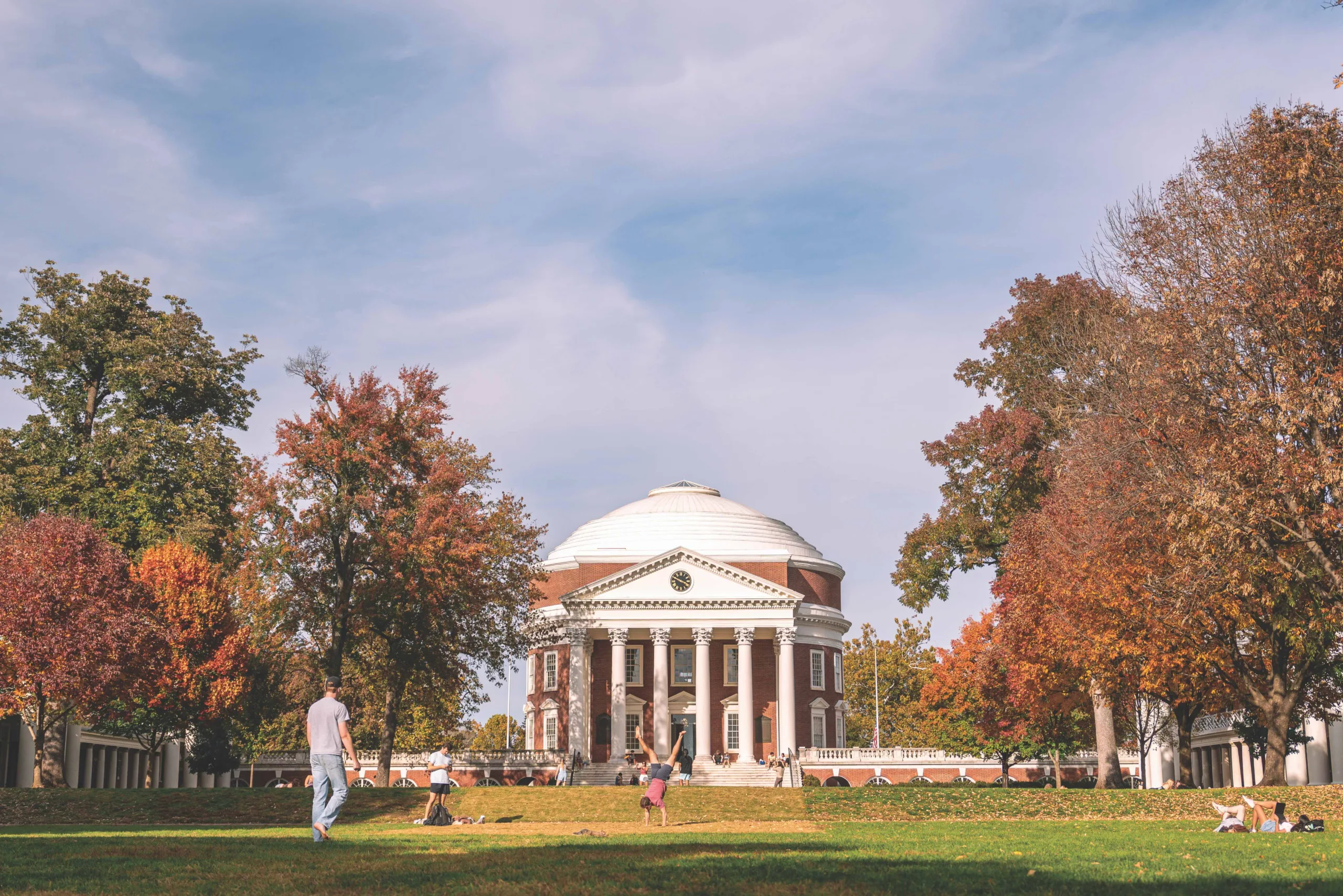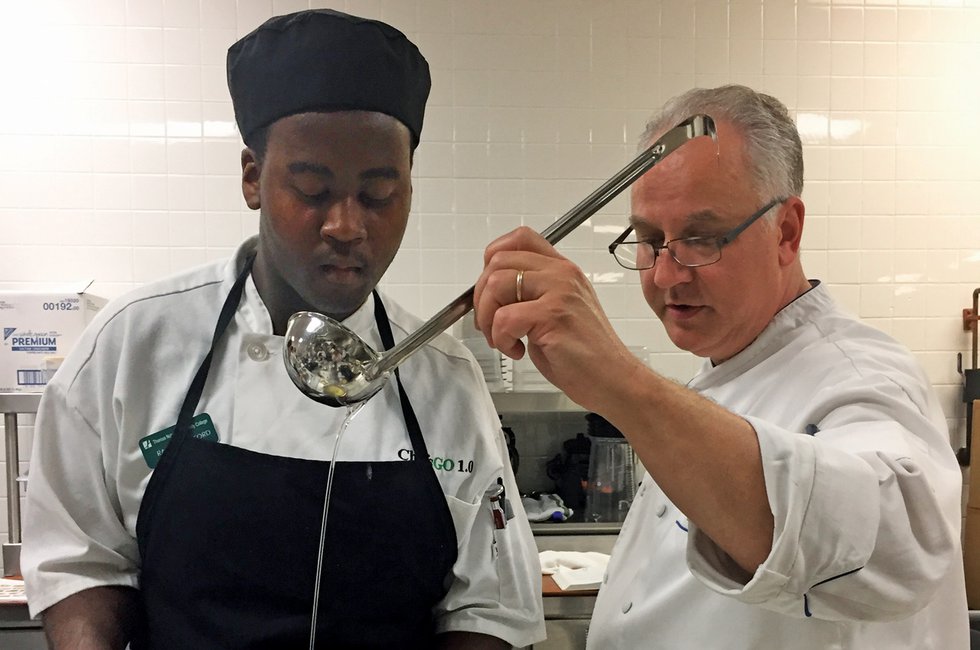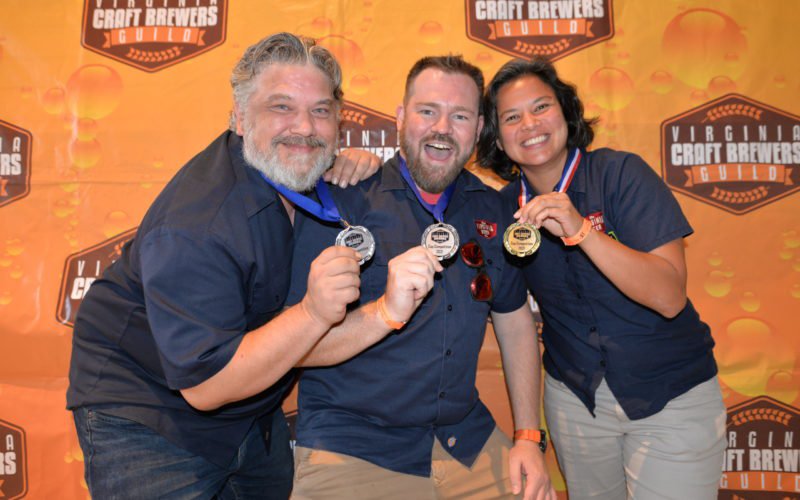Edna Lewis was a master cook. Find some of her recipes here.
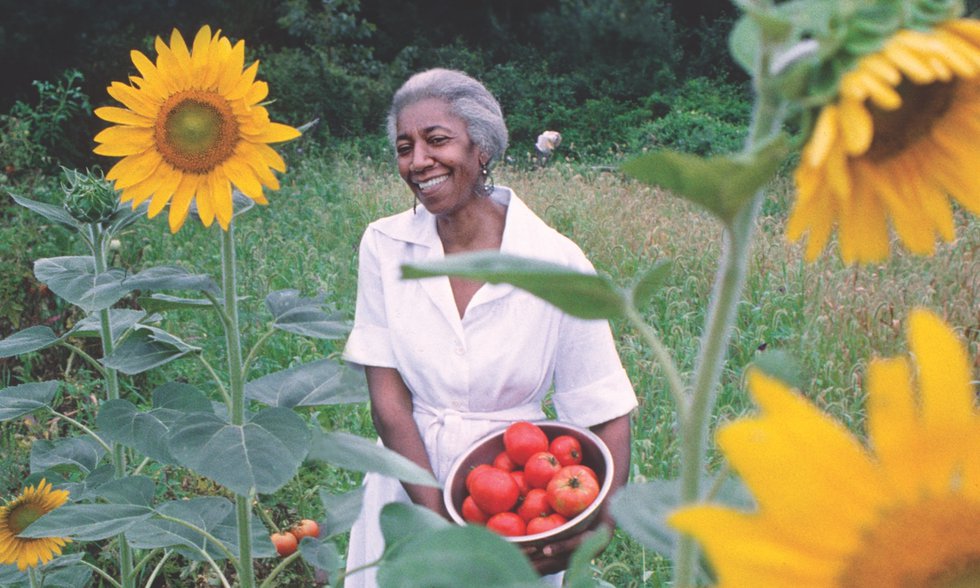
“Edna Lewis makes me want to go right into the kitchen and start cooking,” Beard himself once said. And in 2014, the U.S. Postal Service noted her culinary contributions with an Edna Lewis stamp.
In an era when few women were professional chefs, Lewis’ ascension as one of the most important culinary voices of the 20th century is nothing short of remarkable. One of eight children, she was born in 1916 in the Orange County community of Freetown, which was founded by her grandfather, a former slave. The small community of families lived and farmed together, slaughtering hogs, tending kitchen gardens, and foraging for nuts and berries, guided by the seasons.
“Whenever I go back to visit my sisters and brothers,” Lewis wrote in The Taste of Country Cooking (1976), her second cookbook, “we relive old times … and when we share again in gathering wild strawberries, canning, rendering lard, finding walnuts, picking persimmons, making fruitcake, I realize how much the bond that held us had to do with food.”
Orange County plans to erect a historical marker at Bethel Baptist Church on Petersburg Road, to commemorate Freetown, now long gone. Lewis’ stories of growing up there live on, thanks to legendary cookbook editor Judith Jones, who also shepherded Julia Child’s books into publication. It was Jones who encouraged Lewis to tell the stories behind her recipes through the lens of place and time.
With her first book, The Edna Lewis Cookbook, published in 1972, Lewis’ gift for storytelling captivated generations of cooks and readers. The book was “a love letter to Virginia,” says Debra Freeman, a food anthropologist and culinary historian based in Richmond. “Through her writing, Lewis was able to switch the way people think about Southern food,” Freeman says. Farm-to-table dining? “Edna had been doing it all along.”
To honor the book’s 50th anniversary—along with Lewis’ four subsequent titles including her seminal A Taste of Country Cooking—Orange County has launched the Edna Lewis Menu Trail, a collection of eight restaurants in the area that celebrate Lewis’ signature dishes.
Each homey dish on the menu trail reflects the seasonal flavors that informed Lewis’ cooking. You can taste her rich coconut cake at The Barbeque Exchange in Gordonsville, her roasted quail stuffed with wild rice and grapes at Spoon & Spindle in Orange, and her smothered braised rabbit and slow-roasted sticky ribs at Vintage Restaurant at the Inn at Willow Grove, also in Orange.

After the death of her parents, Lewis headed north from Freetown at 16, stopping first in Washington, D.C., before heading to New York City. She was hired as a laundress, but lasted only three days, having never ironed before. More proficient in sewing, Lewis found a job as a seamstress, where she once made a dress for rising starlet Marilyn Monroe. But her true talent was in the kitchen.
When her friend John Nicholson opened Café Nicholson in 1949, she realized her dream of becoming a chef. The French bistro on East 57th Street became a favorite haunt of the famous. Soon, Lewis was brushing shoulders with Greta Garbo, Marlon Brando, Tennessee Williams, Salvador Dalí, and Eleanor Roosevelt.
She eventually left to become a lecturer and private caterer and, in 1972, collaborated with socialite Evangeline Peterson to write her first cookbook, a move that would forever change the conversation around Southern cooking.
“I struggled for years to figure out what real Virginia cuisine could be,” says Craig Hartman, the owner of two restaurants on the Edna Lewis Menu Trail, The Barbeque Exchange and Champion Ice House, both in downtown Gordonsville. “But when I learned about Edna Lewis and the melding of African culture in cooking, the foods of Virginia started to make so much more sense.”
For too long, recipes developed by black chefs were co-opted by white cookbook authors, author Toni Tipton Martin notes in her James Beard Award-winning The Jemima Code: Two Centuries of African American Cookbooks. Through her books, Edna Lewis began rewriting that history. She also allowed Southern food, and those who cooked it, to see themselves in a new light.

That was the case for Scott Peacock, who met Lewis in Atlanta in his 20s, when he was hired as the executive chef at the Georgia Governor’s Mansion. Peacock saw cooking as a way to shed his Alabama childhood and, someday, cook in Italy. “What I learned from Miss Lewis was that I didn’t need to apologize for who and where I already was. That there was value and integrity to my own experience.”
Peacock went on to culinary stardom, swirling about Atlanta’s sophisticated restaurant scene. He emerged as one of the best biscuit masters in the business, no doubt due to Lewis’ influence, and now runs “Biscuit Experiences” out of the restored Reverie mansion in Marion, in the heart of Alabama’s Black Belt. Back in his home state, the lessons he learned from Lewis about valuing his heritage stuck.
Peacock and Lewis became lifelong friends, eventually collaborating on their own cookbook, The Gift of Southern Cooking: Recipes and Revelations from Two Great American Cooks. They lived together as housemates until Lewis’ death in 2006 at age 89.
“She radically changed how I saw myself, the South, and Southern Cuisine in a way that fully changed the path and purpose of my life,” Peacock reflects. “Now, approaching 17 years since her passing, her friendship and influence remain present, active aspects of my daily life.”
VisitOrangeVirginia.com/Taste/The-Edna-Lewis-Menu-Trail
Edna Lewis’ Corn Muffins
Makes 12 muffins
- 2 tablespoons lard or butter, plus 2 tablespoons melted butter
- 2½ cups extra-fine cornmeal
- 1 teaspoon salt
- 1 teaspoon baking soda
- ½ teaspoon homemade baking powder
- 2½ cups buttermilk, room temperatures
- 1 egg beaten

Preheat oven to 400℉ degrees. Generously grease the walls of the muffin pan with 2 tablespoons of lard or butter, leaving the extra fat in the wells. In a mixing bowl, sift together the cornmeal, salt, baking soda, and baking powder.
When the oven is hot, place the muffin tin inside to preheat. Meanwhile, stir the buttermilk into the dry ingredients and mix well, then stir in the egg and 2 tablespoons melted butter. When the muffin pan is very hot, carefully remove it, and quickly fill each well with about 3 ounces (a little less than ½ cup). Bake for 17-20 minutes, rotating once, until a toothpick inserted comes out clean and the edges of the muffins are golden brown.
Let the pan cool for 2 minutes on a rack, then remove the muffins. Serve hot with butter.
Southern Pan-Fried Chicken
4 to 6 servings
Recipe from Edna Lewis and Scott Peacock.
Note: this recipe calls for a significant time commitment, involving overnight brining and a buttermilk bath, but it’s well worth it.
- One 3-pound chicken, cut into 8 pieces
- ¼ cup kosher salt
- 6 cups water
- 4 cups buttermilk
- 1 pound lard
- 8 tablespoons unsalted butter
- ½ cup country ham pieces or 1 thick-slice country ham, cut into ½-inch strips
- 1 cup flour
- 2 tablespoons cornstarch
- ½ teaspoon salt
- ½ teaspoon freshly ground black pepper
Step 1: The night before serving
Place chicken in a large bowl and set aside. In a large pitcher, combine kosher salt with 6 cups of water and stir until the salt has dissolved. Pour salted water over chicken pieces until they are submerged. Cover and refrigerate overnight.
Step 2: In the morning
Drain chicken pieces and rinse chicken and bowl. Return chicken to bowl and cover with buttermilk. Cover and refrigerate for 8 to 12 hours.
Step 3: About 1¼ hours before serving
Combine the lard, butter, and ham in a large heavy skillet. Cook over low heat, skimming as needed, until ham is lightly browned, 30-45 minutes. Using a slotted spoon, remove ham and brown bits from fat. Increase heat to medium high and the fat to 335℉.
Step 4:
In a shallow bowl, combine flour, cornstarch, salt, and pepper, and mix well. Dredge chicken pieces thoroughly in flour mixture, then pat well to remove excess flour. Working in batches (do not crowd the pan), place chicken pieces, skin side down, in fat. Cook 8-10 minutes on each side, until chicken is golden brown and cooked through. Drain on crumpled paper towels. Serve hot, warm, room temperature, or cold.
Macaroni and Cheese
Serves 8-10
Recipe courtesy The Gift of Southern Cooking, by Edna Lewis and Scott Peacock
- 1½ teaspoons kosher salt, plus more to taste
- 8 oz. hollow pasta, preferably elbow macaroni
- Butter, for greasing
- 7 oz. extra-sharp cheddar, cut into half-inch cubes, plus 6 oz. grated cheddar cheese
- 2 tablespoons all-purpose flour, plus 1 teaspoon
- 1½ teaspoons dry mustard
- ¼ teaspoon freshly ground black pepper
- ¼ teaspoon freshly grated nutmeg
- ⅛ teaspoon cayenne pepper
- ⅔ cup sour cream
- 2 large eggs, lightly beaten
- 1½ cups half-and-half
- 1½ cups heavy cream
- ⅓ cup grated onion
- 1 teaspoon Worcestershire sauce
Heat oven to 350°F. Bring a 4-quart saucepan of salted water to a boil. Add pasta and cook until cooked halfway through, about 3 minutes. Drain pasta and transfer to a greased 9″ x 13″ baking dish. Stir in the cubed cheddar cheese and set aside. Combine salt, flour, mustard, black pepper, nutmeg, and cayenne in a large mixing bowl. Add the sour cream and eggs and whisk until smooth. Whisk in the half-and-half, heavy cream, onion, and Worcestershire sauce. Pour egg mixture over the reserved pasta mixture and stir to combine. Sprinkle the grated cheese evenly over the surface. Bake until the pasta mixture is set around the edges but still a bit loose in the center, about 30 minutes. Let cool for 10 minutes before serving.

Cheese Soufflé
Serves 4
- 5 oz. sharp white cheddar cheese
- 3 oz. Gruyère cheese
- 2 tablespoons butter
- 2 tablespoons flour
- 1 cup warm milk
- 3 egg yolks, slightly beaten
- ½ teaspoon salt
- ¼ teaspoon cayenne
- 1 teaspoon dry mustard
- 5 egg whites
Preheat the oven to 425℉. Butter a 1.5 quart soufflé dish, and set it on the top of the stove or in a warm place to warm up.
Grate the cheese using the next to the finest side of a four-sided grater. Melt the butter in a heavy saucepan over medium-high heat. Add the flour and cook for a few minutes, stirring until the flour is well-blended, without browning. Pour in the warm milk, stirring all the while. Remove the pan from the burner and add the egg yolks, mixing them in well. Add the grated cheese and mix thoroughly. Add the salt, cayenne, and dry mustard, and mix well again. The cheese should melt in the warm sauce without further cooking on top of the stove. Cover the pan lightly and leave to cool a bit before mixing in the beaten egg whites. Beat the egg whites to soft peaks. Stir the cheese batter and pour it into the egg whites, then fold the whites into the batter gently and thoroughly until well blended. Spoon the mixture into the soufflé dish (or you could use individual ramekins). Fill the dish 3/4 full. Set the soufflé dish in the preheated oven. After 5 minutes, turn the oven down to 400°F, and cook for 15 minutes. Serve at once.
Southern Pan-Fried Chicken
4 to 6 servings
Recipe from Edna Lewis and Scott Peacock.
Note: this recipe calls for a significant time commitment, involving overnight brining and a buttermilk bath, but it’s well worth it.
- One 3-pound chicken, cut into 8 pieces
- ¼ cup kosher salt
- 6 cups water
- 4 cups buttermilk
- 1 pound lard
- 8 tablespoons unsalted butter
- ½ cup country ham pieces or 1 thick-slice country ham, cut into ½-inch strips
- 1 cup flour
- 2 tablespoons cornstarch
- ½ teaspoon salt
- ½ teaspoon freshly ground black pepper
Step 1: The night before serving
Place chicken in a large bowl and set aside. In a large pitcher, combine kosher salt with 6 cups of water and stir until the salt has dissolved. Pour salted water over chicken pieces until they are submerged. Cover and refrigerate overnight.
Step 2: In the morning
Drain chicken pieces and rinse chicken and bowl. Return chicken to bowl and cover with buttermilk. Cover and refrigerate for 8 to 12 hours.
Step 3: About 1¼ hours before serving
Combine the lard, butter, and ham in a large heavy skillet. Cook over low heat, skimming as needed, until ham is lightly browned, 30-45 minutes. Using a slotted spoon, remove ham and brown bits from fat. Increase heat to medium high and the fat to 335℉.
Step 4:
In a shallow bowl, combine flour, cornstarch, salt, and pepper, and mix well. Dredge chicken pieces thoroughly in flour mixture, then pat well to remove excess flour. Working in batches (do not crowd the pan), place chicken pieces, skin side down, in fat. Cook 8-10 minutes on each side, until chicken is golden brown and cooked through. Drain on crumpled paper towels. Serve hot, warm, room temperature, or cold.
This article originally appeared in the April 2023 issue.
